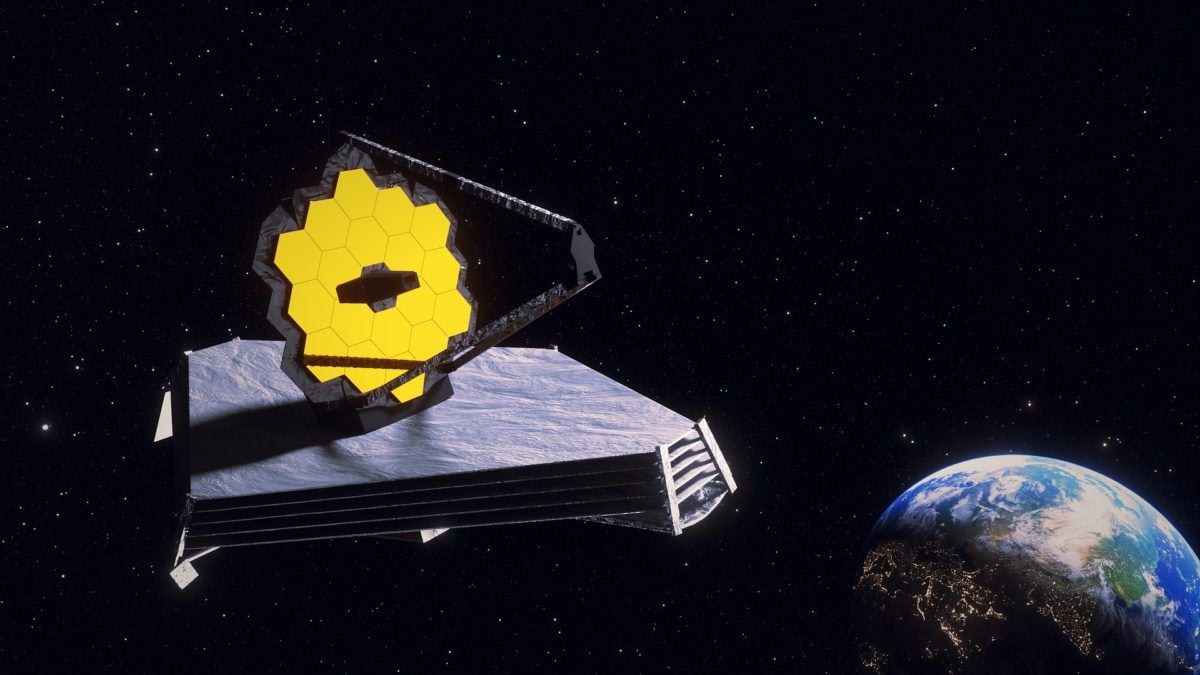
Although non-biological processes can generate methane, a new study by scientists at the University of Santa Cruz, California, establishes a set of circumstances in which a convincing case could be made for biological activity as a source of methane in the atmosphere of a rocky planet.
Methane is one of the few potential signs of life, or biosignatures, that could be easily detected with the James Webb Space Telescope (JWST), launched by NASA in December. “Oxygen is often spoken of as one of the best biological signatures, but it will probably be difficult to detect with JWST,” explained Maggie Thompson, graduate student in astronomy and astrophysics at the University of California Santa Cruz (UCSC) and lead author of the new study.
Biosignatures or indicators of life are substances, elements or phenomena that provide scientific evidence of potential signs of life, whether in the past or in the present. Despite some previous studies on methane biosignatures, there has not been an updated and dedicated assessment of the planetary conditions necessary for methane to be a good indicator of life.
“We wanted to provide a framework for interpreting observations, so if we see a rocky planet with methane, we know what other observations are needed to make it a persuasive biological signature,” Thompson said.

Published in Proceedings of the National Academy of Sciences, the study examines a variety of non-biological sources of methane and assesses their potential to maintain a methane-rich atmosphere. These include volcanoes; reactions in environments such as ocean ridges, hydrothermal fumaroles and tectonic subduction zones; and impacts from comets or asteroids.
The case of methane as a biological signature stems from its instability in the atmosphere. Because photochemical reactions destroy atmospheric methane, it must be constantly replenished to maintain high levels. “If a large amount of methane is detected on a rocky planet, a massive source is usually needed to explain its occurrence,” co-author Joshua Krissansen-Totton, also a member of UCSC, completed. We know that biological activity creates large amounts of methane on Earth, and it probably did so in the early stages because producing methane is something quite easy metabolically.”
However, non-biological sources could not produce as much methane without also generating observable clues as to its origins. Degassing volcanoes, for example, would add both methane and carbon monoxide to the atmosphere, while biological activity tends to easily consume carbon monoxide. Researchers found that non-biological processes cannot easily produce habitable planetary atmospheres rich in methane and carbon dioxide and with little or no carbon monoxide.
The study emphasized the need to consider the entire planetary context when evaluating possible biological signatures. The researchers concluded that for a rocky planet orbiting a Sun-like star, atmospheric methane is more likely to be considered a strong sign of life if the atmosphere also contains carbon dioxide, methane is more abundant than carbon monoxide and extremely rich in water. planetary compositions can be ruled out.
“A molecule will not give you the answer, you must take into account the entire context of the planet,” Thompson warned. “Methane is one piece of the puzzle, but to determine if there is life on a planet, you must consider its geochemistry, how it interacts with its star, and the many processes that can affect a planet's atmosphere on geological time scales.”
The study considered a variety of possibilities for false positives and provided guidelines for evaluating methane biosignatures. “There are two things that could go wrong: we could misinterpret something like a biological signature and get a false positive, or we could overlook something that is a real biological signature,” Krissansen-Totton warned. With this document, we wanted to develop a framework to avoid both potential errors with methane.”
The authors state that there is still a lot of work to be done to fully understand any future methane detection. “This study focuses on the most obvious false positives for methane as a biological signature,” Krissansen-Totton concluded. The atmospheres of rocky exoplanets will probably surprise us, and we will have to be cautious in our interpretations. Future work should seek to anticipate and quantify more unusual mechanisms for the production of non-biological methane.”
KEEP READING:
Últimas Noticias
Debanhi Escobar: they secured the motel where she was found lifeless in a cistern
Members of the Specialized Prosecutor's Office in Nuevo León secured the Nueva Castilla Motel as part of the investigations into the case

The oldest person in the world died at the age of 119
Kane Tanaka lived in Japan. She was born six months earlier than George Orwell, the same year that the Wright brothers first flew, and Marie Curie became the first woman to win a Nobel Prize

Macabre find in CDMX: they left a body bagged and tied in a taxi
The body was left in the back seats of the car. It was covered with black bags and tied with industrial tape
The eagles of America will face Manchester City in a duel of legends. Here are the details
The top Mexican football champion will play a match with Pep Guardiola's squad in the Lone Star Cup

Why is it good to bring dogs out to know the world when they are puppies
A so-called protection against the spread of diseases threatens the integral development of dogs




